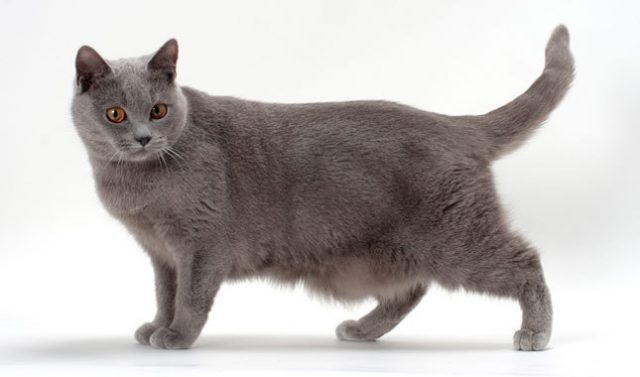Type the name of the breed you're looking for below
[wpdreams_ajaxsearchlite] Don't see the breed your're looking for? Click here and let us know!
Breed Characteristics
1 paw - breed exhibits the least amount of this characteristic
5 paws - breed exhibits most amount of this characteristic
Chartreux
| Origin And History | The Chartreux is mentioned for the first time in 1558 by Joachim du Bellay in a poem entitled Vers Français sur la mort d'un petit chat (French verse on a small kitten's death). There is another representation of a Chartreux in 1747 in the Jean-Baptiste Perronneau's painting Magdaleine Pinceloup de la Grange into which the cat is painted as a pet which is quite rare at this time. There is a legend that the Chartreux are descended from cats brought to France by Carthusian monks to live in the order's head monastery, the Grande Chartreuse, located in the Chartreuse Mountains north of the city of Grenoble. But in 1972, the Prior of the Grande Chartreuse denied that the monastery's archives held any records of the monks' use of any breed of cat resembling the Chartreux. Legend also has it that the Chartreux's ancestors were feral mountain cats from what is now Syria, brought back to France by returning Crusaders in the 13th century, many of whom entered the Carthusian monastic order. The first documented mention of the breed was by the French naturalist Buffon in the 18th century. The breed was greatly diminished during the first World War and wild populations were not seen after World War II. A concerted effort by European breeders kept the breed from extinction. The first Chartreux were brought to the U.S. in 1971 by Helen and John Gamon of La Jolla, California. There are fewer than two dozen active Chartreux breeders in North America as of 2007. Historically famous Chartreux owners include the French novelist Colette, Charles Baudelaire and French president Charles de Gaulle. |
| Personality | Known for their hunting prowess, Chartreux cats may have been taken in by those monks long ago to rid the monastery of vermin. Today, however, Chartreux cats are popular because they make terrific companions. They are amiable, loyal, and vocally quiet, and when you sit down next to your Chartreux you invariably end up with a lap full of cat. Known as quiet, sweet cats, Chartreux cats also have a playful, comical side that they keep well into adulthood. They seem to have a well-developed sense of humor, and enjoy a good game of fetch or a playful romp with their friends and family. They are very intelligent cats; they quickly learn their names and will come when you call, if they're in the mood, of course. |
Physical Attributes
| Appearance | The Chartreux is large and muscular, with relatively short, fine-boned limbs, and very fast reflexes. They are known for their blue (grey) water-resistant short hair double coats which are often slightly nappy in texture (often showing "breaks" like a sheepskin) and orange- or copper-colored eyes. Chartreux cats are also known for their "smile": due to the structure of their heads and their tapered muzzles, they often appear to be smiling. The Chartreux has a robust body, broad shoulders and a deep chest, all complemented by medium short, finely boned legs. The Chartreux is well muscled, which would enable the cat to meet its obligation as the fine mouser it is reputed to be in French literature. Unlike any other cat, the Chartreux’s blue fur is medium in length and woolly, with the proper coat breaking at the neck, chest, and flanks. A dense undercoat gives it resistance to the elements and a feeling of sheep’s wool. |
| Health | Physical maturity can be three years in coming, with a scraggly stage between kitten and adulthood that puts one in mind of a gawky, adolescent youngster. Then, almost overnight, they put it all together, with stunning results. Environment and attention have everything to do with this breed’s adult manners and behavior. Brushing the double coat is a no-no. Instead, running your fingers through the fur on a daily basis will suffice and will also contribute to your cat’s social demeanor at the same time. The Chartreux is generally a healthy and hardy breed, but some lines are known to possess the recessive gene for medial patellar luxation. The condition is genetic in origin, but the exact mode of inheritance is not yet known. |



